Today Current Affairs: 4th January 2022 for UPSC IAS exams, State PSC exams, SSC CGL, State SSC, RRB, Railways, Banking Exam & IBPS, etc
Table of Contents
Draft National Air Sports Policy:

The government has released a draft national policy for air sports.
Highlights of the Policy:
- Two-tier governance structure: The policy proposes a two-tier governance structure for air sports in the country, which will include an apex governing body called the Air Sports Federation of India (ASFI) and associations for each air sport.
- The ASFI will be an autonomous body under the Ministry of Civil Aviation and will represent India at the Lausanne-headquartered Fédération Aéronaautique Internationale (FAI) and other global platforms related to air sports.
- It will provide governance over various aspects of air sports, including regulation, certification, competitions, awards and penalties, etc.
- Rules and Functions of Each air sports association: Lay down its safety standards for equipment, infrastructure, personnel and training, and specify the disciplinary actions to be taken in case of non-compliance. Inability to do so may lead to penal action by the ASFI.
- It will cover activities like aerobatics, aeromodelling, amateur-built and experimental aircraft, ballooning, drones, gliding, hang gliding, paragliding, microlighting, paramotoring, skydiving, and vintage aircraft.
- Registration: It requires entities providing these services and their equipment to be registered, as well as be liable for penalties.
- Indian airspace is divided into red, yellow and green zones, according to the DigitalSky platform of the Directorate General of Civil Aviation, which allows air sports enthusiasts to rely on the easily accessible map for guidance. Operations in red zones require a permission from the central government.
- Control zone: Popular air sports attractions in the country such as Bir Billing in Himachal Pradesh, Gangtok in Sikkim, Hadapsar in Maharashtra and Vagamon in Kerala can be declared as a “control zone” for air sports in order to ensure the safety of other manned aircraft.
Padhe Bharat Campaign:

The Ministry of Education has launched a 100 days reading campaign ‘Padhe Bharat’ (1st January to 10th April 2022).
- 21st February, which is celebrated as International Mother Tongue Day, has also been integrated with this campaign in a view to promote the local language and culture of our society.
- The Campaign is in alignment with the National Education Policy (NEP) 2020, which emphasises on promotion of joyful reading culture for children by ensuring availability of age appropriate reading books for children in local/mother tongue/regional/tribal Language.
- The NEP 2020 aims at making “India a global knowledge superpower”.
- The NEP is only the third major revamp of the framework of education in India since independence. The two earlier education policies were brought in 1968 and 1986.
- It will focus on children studying in Balvatika to Grade 8.
- This campaign has also been aligned with the vision and goals of the Foundational Literacy and Numeracy Mission.
- It aims to have the participation of all stakeholders at the national and state level including children, teachers, parents, community, educational administrators etc.
China’s New Border Law:

China’s new law on land borders came into effect from 1st January, 2022.
- It comes at a time when border standoff in eastern Ladakh remains unresolved and several places in Arunachal Pradesh have been renamed recently by China as part of its claim on the Indian state.
- The new law lays down that the People’s Republic of China (PRC) shall set up boundary markers on all its land borders to clearly mark the border.
- The People’s Liberation Army (PLA) and Chinese People’s Armed Police Force are assigned with the responsibility of maintaining security along the border.
- This responsibility includes cooperating with local authorities in combating illegal border crossings.
- The law prohibits any party from indulging in any activity in the border area which would “endanger national security or affect China’s friendly relations with neighbouring countries”.
- Even citizens and local organisations are mandated to protect and defend the border infrastructure.
- Finally, the law provides for the border to be sealed in the event of a war, armed conflict, incidents which threaten the security of border residents such as biological and chemical accidents, natural disasters, and public health incidents.
- On the topic of its border-sharing countries, the law lays down that the relations with these countries is to be based on principles of “equality and mutual benefit”.
- Further, the law provides for provisions for formation of joint committees, both civil and military, with the said countries to negotiate land border management and resolve border-related issues.
- The law also stipulates that PRC should abide by the treaties on land borders that it has signed with the respective countries and all border issues are to be settled through negotiations.
Financial Resolution And Deposit Insurance (FRDI) Bill:
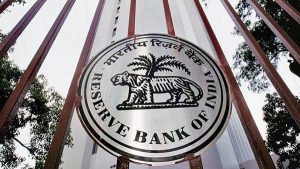
The Finance Ministry has sought views of the Reserve Bank of India (RBI) on drafting a modified version of the Financial Resolution and Deposit Insurance (FRDI) Bill in order to deal with Insolvency of Firms in the financial sector.
- In 2018, the Government had withdrawn the FRDI Bill 2017 amid concerns over the security of bank deposits.
- The FRDI Bill, 2017 was meant to address the issue of insolvency of firms in the financial sector.
- If a bank, NBFC, an insurance company, a pension fund or a mutual fund-run by an asset management company fails, a quick solution is available to either sell that firm, merge it with another firm, or close it down, with the least disruption to the system and other stakeholders.
- It aimed to limit the fallout of the failure of institutions like banks, insurance companies, non-banking financial companies, pension funds and stock exchanges.
- The Bill was withdrawn due to concerns among the public over safety of deposits despite assurances by the Central government.
- A key point of criticism was the so-called bail-in clause in the Bill that said in case of insolvency in a bank, the depositors will have to bear a part of the cost of the resolution by a corresponding reduction in their claims.
About the New Bill:
- The bill will provide for establishing a resolution authority, which would have powers to undertake prompt resolution for banks, insurance companies and systemically important financial firms.
- The legislation will also provide for an insurance of up to Rs 5 lakh for bank depositors, which already has a legal backing.
- Even as the RBI has come out with a Prompt Corrective Action framework for NBFCs (Non Banking Financial Companies), a need is being felt for a legislative backing for the entire financial sector.
- The current resolution regime is especially inappropriate for private sector financial firms in the light of significant expansion and many of these acquiring systemically important status in India.
- The provision of a single agency for resolution of financial firms is in line with the recommendations made by the Financial Sector Legislative Reforms Commission (FSLRC), 2011 headed by Justice B N Srikrishna.
- The Insolvency and Bankruptcy Code, 2021 along with the FRDI bill would have streamlined the procedure for the winding up or revival of an ailing financial sector firm.
What Is The Rythu Bandhu?
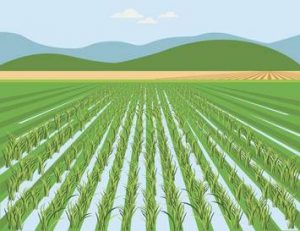
The total funds disbursed under Rythu Bandhu, Telangana government’s direct benefit transfer scheme for farmers, will soon touch Rs 50,000 crore in the coming days.
The scheme was launched in 2018.
- Rythu Bandhu scheme or Farmer’s Investment Support Scheme (FISS) is a welfare program to support farmer’s investment for two crops a year by the Government of Telangana.
- The scheme is meant to incentivise the state’s farmers for their day to day work.
- Under the scheme, almost 58.33 lakh farmers of Telangana state are provided Rs 5000 per acre, per season (crop-sowing) – to support the farm investment twice a year, for both – the Rabi and the Kharif seasons.
- The purpose behind the scheme was to break the vicious cycle of rural indebtedness.
- To apply under the scheme and to make the cut, the farmer should have been a resident of Telangana state and must own farming land.
- The scheme is applicable for small and marginal farmers; however, commercial farmers are excluded from the scheme.
- Also, farmers who till rented land are excluded from under this scheme.
- Currently, more than 8 lakh farmers in Telangana enjoy the benefits of the Rythu Bandhu scheme.”
- The state government extends financial support to land-owning farmers at the beginning of the crop season through direct benefit transfer so that they can take care of the initial investment needs and do not fall into a debt trap.
- This in turn instills confidence in farmers, enhances productivity and income, and breaks the cycle of rural indebtedness.
- The state government has often said that the Centre’s PM-KISAN (Pradhan Mantri Kisan Samman Nidhi) scheme is a “copy” of Rythu Bandhu.
- The Telangana government further claims that its own scheme is much better than PM-KISAN.
- Rythu Bandhu is based on anticipated input expenditure for each acre of land and there is no restriction on the number of acres owned by a farmer.
- PM-KISAN only provides support to the family and not to the farm units.
Solid-State Batteries:
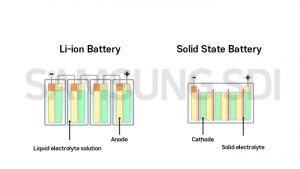
Shareholders of California-based QuantumScape Corp, a battery startup backed by Volkswagen AG, have approved a multibillion-dollar pay package for Chief Executive Officer Jagdeep Singh, subject to the company meeting some performance milestones.
- QuantumScape’s solid-state battery — lithium metal with a solid electrolyte separating the two electrodes — is seen as an exceptionally bright prospect in an increasingly crowded space.
- QuantumScape says its solid-state lithium-metal battery replaces the polymer separator used in conventional lithium-ion batteries with a solid-state separator.
- The lithium metal anode is more energy-dense than conventional anodes, which allows the battery to store more energy in the same volume, according to the company.
- The advantages of the solid-state battery technology include higher cell energy density (by eliminating the carbon anode), lower charge time (by eliminating the need to have lithium diffuse into the carbon particles in conventional lithium-ion cells), ability to undertake more charging cycles and thereby a longer life, and improved safety.
Economically Weaker Sections:
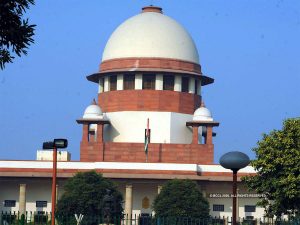
A government committee report in the Supreme Court has said that “income” is a “feasible criterion” for defining the “Economically Weaker Sections” (EWS) in society, and the annual family income of ₹8 lakh is a “reasonable” threshold to determine EWS in order to extend reservation in admissions and jobs.
- The committee did not agree with the notion that the Union government had “mechanically adopted” ₹8 lakh as a number because it was also used for the OBC creamy layer cut-off.
- It said the income criterion for EWS was “more stringent” than the one for the OBC creamy layer.
- Firstly, EWS’s criteria relates to the financial year prior to the year of application whereas the income criterion for the creamy layer in OBC category is applicable to gross annual income for three consecutive years.
- Secondly, in case of OBC creamy layer, income from salaries, agriculture and traditional artisanal professions are excluded from the consideration whereas the ₹8 lakh criteria for EWS includes all sources, including farming.
- The report is the result of the Supreme Court’s repeated grilling of the government, since October, to explain how it zeroed in on the figure of ‘₹8 lakh’ as the annual income criterion to identify EWS among forward classes of society for grant of 10% reservation in National Eligibility-cum-Entrance Test (NEET) medical admissions under the All India Quota (AIQ) category.
- The Supreme Court’s query was significant as the One Hundred and Third Constitutional Amendment of 2019, which introduced the 10% EWS quota, is itself under challenge before a larger Bench. The Amendment is under question for making economic criterion as the sole ground for grant of reservation benefits.
- The Centre had then formed an expert committee comprising Ajay Bhushan Pandey, former Finance Secretary; professor V.K. Malhotra, Member Secretary, ICSSR; and Sanjeev Sanyal, Principal Economic Adviser to the Government of India. The committee had submitted its report on December 31.
Hamas And Gaza Strip:

Israel’s military has launched strikes against militant targets in the Gaza Strip, a day after rockets were fired from the Hamas-ruled territory.
- The cease-fire, brokered by Egypt and other mediators, has been fragile. The militant Hamas group says Israel did not take serious steps to ease the blockade it imposed on Gaza with Egypt’s help when the Islamic movement seized control of the coastal enclave in 2007.
- Hamas is a Palestinian Islamist political organization and militant group that has waged war on Israel since the group’s 1987 founding, most notably through suicide bombings and rocket attacks.
- It seeks to replace Israel with a Palestinian state. It also governs Gaza independently of the Palestinian Authority.
- Gaza has been under a tightened Israeli blockade since 2007 in which most basic goods still enter the region under highly restricted measures.
- In May, an Israeli offensive left nearly 260 Palestinians dead and thousands wounded as well as a vast trail of destruction in Gaza. Palestinian resistance groups responded with rocket barrages into Israeli areas, killing at least 13 Israelis.
- The Gaza Strip is an entirely artificial creation that emerged in 1948 when roughly three-fourths of Palestine’s Arab population was displaced, in some cases expelled, during the course of Israel’s creation. And most of the refugees, they were sort of scattered across the region in neighboring countries like Jordan, Syria and Lebanon.
- Some went to the West Bank, which came under Jordanian rule after 1948. And a very large number went to the Gaza Strip, which is this tiny little coastal strip between Egypt and what is now Israel. Today, the population of Gaza, about 70% of Gaza’s population are refugees.
Jal Jeevan Mission:

The Ministry of Jal Shakti has approved Drinking Water Supply schemes of Rs. 15,381.72 Crore for Madhya Pradesh under Jal Jeevan Mission (JJM).
- JJM aims to ensure assured tap water supply or ‘Har Ghar Jal’ to all rural households by 2024.
- Launched in 2019, it envisages supply of 55 litres of water per person per day to every rural household through Functional Household Tap Connections (FHTC) by 2024.
- JJM looks to create a jan andolan for water, thereby making it everyone’s priority.
- It comes under Jal Shakti Ministry.
- The mission ensures functionality of existing water supply systems and water connections, water quality monitoring and testing as well as sustainable agriculture.
- It also ensures conjunctive use of conserved water; drinking water source augmentation, drinking water supply system, grey water treatment and its reuse.
- JJM focuses on integrated demand and supply-side management of water at the local level.
- Creation of local infrastructure for source sustainability measures as mandatory elements, like rainwater harvesting, groundwater recharge and management of household wastewater for reuse, is undertaken in convergence with other government programmes/schemes.
- The Mission is based on a community approach to water and includes extensive Information, Education and Communication as a key component of the mission.
- Implementation: Paani Samitis plan, implement, manage, operate and maintain village water supply systems.
- These consist of 10-15 members, with at least 50% women members and other members from Self-Help Groups, Accredited Social and Health Workers, Anganwadi teachers, etc.
- The committees prepare a one-time village action plan, merging all available village resources. The plan is approved in a Gram Sabha before implementation.
- Funding Pattern: The fund sharing pattern between the Centre and states is 90:10 for Himalayan and North-Eastern States, 50:50 for other states, and 100% for Union Territories.
- When the mission was launched, only 17% (32.3 million) of the country’s rural households had a tap water supply.
- Today, 7.80 Crore (41.14%) households have tap water supply. Goa, Telangana, Andaman & Nicobar Islands and Puducherry have achieved 100% household connection in rural areas and have become ‘Har Ghar Jal’.
- To complement the Jal Jeevan Mission (Rural), Jal Jeevan Mission (Urban) was announced in the Budget 2021-22.
Agreement On Prohibition Of Attacks Against Nuclear Installations And Facilities: India – Pakistan
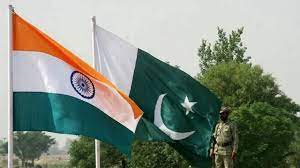
India and Pakistan have exchanged a list of their nuclear installations.
- The exchange was in accordance with the Article-II of Agreement on Prohibition of Attacks against Nuclear Installations and Facilities between Pakistan and India.
- The two countries also exchanged lists of prisoners held in each other’s prisons under the provisions of the Agreement on Consular Access signed in May 2008.
- Under this pact, the two countries should exchange comprehensive lists on 1st January and 1st July every year.
Prohibition of Attacks against Nuclear Installations and Facilities:
- According to this agreement, both countries have to inform each other of the nuclear facilities.
- The agreement was signed in 1988 and ratified in 1991.
- This was the 31st consecutive exchange of the list between the two neighboring countries.
- Nuclear power and research reactors, fuel fabrication, uranium enrichment, isotopes separation and reprocessing facilities, as well as any other installations with fresh or irradiated nuclear fuel and materials in any form and establishments storing significant quantities of radioactive materials, are all included under the umbrella term “nuclear installations and facilities”.
Semiconductor Shortage:

There has been an abrupt and cascading shortage of semiconductors worldwide.
- Semiconductors are materials which have a conductivity between conductors (generally metals) and nonconductors or insulators (such as most ceramics). Semiconductors can be pure elements, such as silicon or germanium, or compounds such as gallium arsenide or cadmium selenide.
- Conductivity is the measure of the ease at which an electric charge or heat can pass through a material.
- They are also known as integrated circuits or more commonly just chips, they may be the tiniest yet most exacting product ever manufactured on a global scale.
- It’s an electric circuit with many components such as transistors and wiring formed on a semiconductor wafer. An electronic device comprising numerous of these components is called Integrated Circuit (IC), and can be found in electronic devices such as computers, smartphones, appliances, gaming hardware and medical equipment.
- These devices find widespread use in almost all industries, especially in the automobile industry.
- Electronic parts and components today account for 40% of the cost of a new internal combustion engine car, up from less than 20% two decades ago.
- Semiconductor Chips account for a bulk of this increase.
Reasons for the Shortage:
- Work from Home due to Covid: Lockdowns increased the growth in sales of laptops to the highest in a decade.
- Home networking gear, webcams and monitors were snapped up as office work moved out of the office, and laptops were in demand for a while as schools shut.
- Automakers that cut back drastically early in the pandemic underestimated how quickly car sales would rebound. They rushed to re-up orders late in 2020, only to get turned away because chipmakers were stretched supplying computing and smartphone giants.
- Computer makers began warning about tight supplies early in 2020. Then around the middle of that year, Huawei Technologies Co. — the Chinese smartphone maker that also dominates the global market for 5G networking gear — began building up inventory to ensure it could survive US sanctions that were set to cut it off from its primary suppliers.
- Other companies followed suit, hoping to grab share from Huawei, and China’s chip imports climbed to almost USD 380 billion in 2020, up from about USD 330 billion the previous year.
- Disasters: Production plants in the US were affected by the cold and in japan by wildfire.
- Manufacturing advanced logic chips requires extraordinary precision, along with huge long-term bets in a field subject to rapid change.
- Plants cost billions of dollars to build and equip, and they have to run flat-out 24/7 to recoup the investment.




